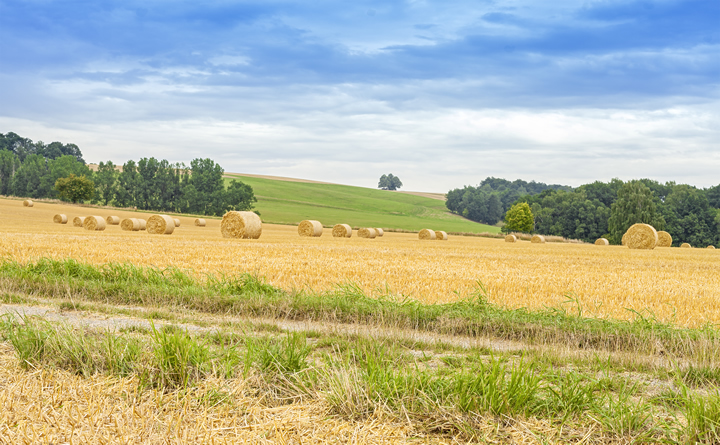Preventing Wildfires Through Overgrowth Management

Wildfires devastate thousands of acres of land each year, and various events can start them. Lightning, unauthorized human activity and even prescribed burns can get out of control. Many people end up without their homes or belongings as a result, and, unfortunately, wildfires can be challenging to manage, especially when they rage for multiple days.
A wildfire, no matter how large or small, significantly disrupts farming operations and industries. Damage often includes a loss of crops, livestock, equipment and buildings, including homes. This can be extremely costly to agricultural workers, and it could take years to rebuild the farming property.
Farmers are often left to protect their own land and are responsible for ensuring they take safety precautions to stop the spread of a wildfire caused by natural events. Fortunately, the U.S. Department of Agriculture (USDA) has assisted farmers that have experienced wildfire damage. Preparation, mitigation efforts and protection can help to prevent wildfires on agricultural lands or lessen the damage.
Preventing Wildfires on Agricultural Property
Wildfires affect farms and ranches all across America. People can often avoid or minimize the damage if they take precautions and become knowledgeable about fire readiness. There are steps farmers can take before, during and after a wildfire to reduce destruction and costs.
Before
There are some basic safety precautions farmers should take even before a wildfire occurs. These include:
- Installing and maintaining smoke detectors in each building
- Placing fire extinguishers in all structures
- Developing and practicing an evacuation plan
- Keeping areas clear of debris and combustible materials in a safe location
- Ensuring there is an adequate supply of water in various locations around the farm
During
Farmers can also practice fire safety during a fire by:
- Putting human lives first and getting people to safety
- Staying low and covering mouths
- Opening windows to escape
- Slowly opening doors if no smoke or heat is coming from them
- Ordering the importance of livestock, feed and machinery so firefighters can do their best to save them
After
After a fire, farmers and ranchers need to proceed with caution. They should:
- Stay out of burned or damaged structures
- Wear protective gear when navigating their property
- Check with insurance
- Care for livestock and pets if necessary
How Overgrowth Leads to Wildfires and Damage
One of the most significant factors in wildfire spreading is overgrown vegetation. Overgrowth can easily catch fire, which will increase the damage, especially if there is overgrowth near farms and ranches.
Overgrowth occurs when a plot of land is left unmanaged. A tamed space can grow wild in a matter of months. Over time, grasses and giant weeds begin to emerge, and brush and brambles make their way to the plot. Additionally, tree seedlings can start proliferating.
Invasive species also tend to contribute to overgrowth. When land goes unmanaged, and if there are zero threats, invasive species can soon take over a whole area. Common invasives in overgrowth include multiflora rose, autumn olive and Japanese honeysuckle. Often, homeowners, farmers and ranchers may turn to chemicals to solve the problem.
If unchecked, the overgrowth region may begin to creep up on structures and farms. The extra growth often connects to a forest and provides the perfect path to lead the fire to barns, crops, hay or feed storage containers, and even the homes of agricultural workers.
In addition to wildfire damage, overgrowth can block off yards, grow over property lines and even require more expensive solutions if left wild for too long. That’s why agricultural property owners and professionals must manage and prevent overgrowth.
Managing Overgrowth Reduces Wildfire Risk
Managing overgrowth can significantly reduce the risk of a wildfire spreading to agricultural property. All vegetation serves as fuel for a wildfire. If there is any vegetation near a farm, then it is highly prone to catching fire.
Once the fire spreads to a farm, there is a greater chance of damage, as well. Some trees and shrubs are more flammable than others. Japanese honeysuckle, ivy and other invasive species that are typically part of overgrown vegetation are highly combustible. By keeping dense vegetation at bay, wildfires have a more challenging time reaching and damaging important property.
Techniques to Manage Overgrowth
There are multiple techniques and methods to manage overgrowth on agricultural land. It will likely take a few years to fully restore areas overtaken by vegetation, depending on the size of the overgrown plot and the types of plants growing there.
Below are some tools and methods that agricultural professionals can use to manage overgrowth on their property.
Tools
Various tools may be necessary to get rid of vegetation. Here are some standard tools used to clear overgrowth:
- Brush mower: Brush mowers are ideal for cutting down large weeds and younger trees. They work similarly to a lawnmower, as the user pushes it forward from behind. The mower then leaves a few inches of growth above the ground.
- Stump grinder: Stump grinders can eliminate the stumps of larger trees to keep the land smooth and level.
- Shovels: Most farmers likely have shovels on hand, and with multiple people working, they can easily clear a small patch of overgrowth.
- String trimmer: String trimmers come with blade attachments that can tackle nearly any brushy area.
- Protective gear: Those managing the overgrowth should wear protective equipment at all times in case of poison ivy, flying materials and briers.
- Bulldozer: Renting a bulldozer can get the job done relatively quickly, and it’s easier to use for larger overgrown areas.
- Chainsaw or ax: Chainsaws and axes also easily cut through trees, bushes and other vegetation.
Steps for Clearing Overgrowth
Forests and overgrowth should be at least 30 feet away from homes, other buildings around agricultural property and crops to keep a buffer if there is a wildfire. Agriculture professionals should clear any overgrowth near buildings for maximum safety. Below are some steps farmers can take to clear overgrowth:
- Prepare: Farmers must prepare to clear the land before any work begins. This includes checking local laws, removing potential obstacles and marking things on the property that should stay.
- Remove undergrowth: Brush, vines, weeds and grasses should be removed first. Getting the smaller vegetation out of the way makes it easier to get rid of larger items because there are fewer obstacles in the way.
- Remove shrubs and trees: Working from smallest to largest is easiest when clearing overgrowth. Remove smaller shrubs first and work up to full-sized trees.
- Fill holes: Once the vegetation is gone, farmers can fill in holes and level the land for use.
- Maintain: All the hard work that goes into managing overgrowth should not go to waste. Maintaining the land is an essential part of clearing growth. This keeps the ground looking neat, and it prevents the spread of wildfires.
Preventing Wildfires for the Agricultural Industry
Managing overgrowth is a great way to prevent wildfires or at least mitigate their damage on farms. The agricultural industry provides food for millions of people, so it should be protected at all costs.
Comments (0)
This post does not have any comments. Be the first to leave a comment below.
Featured Product


